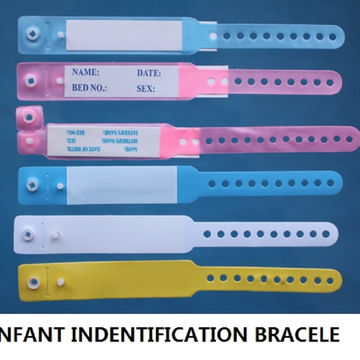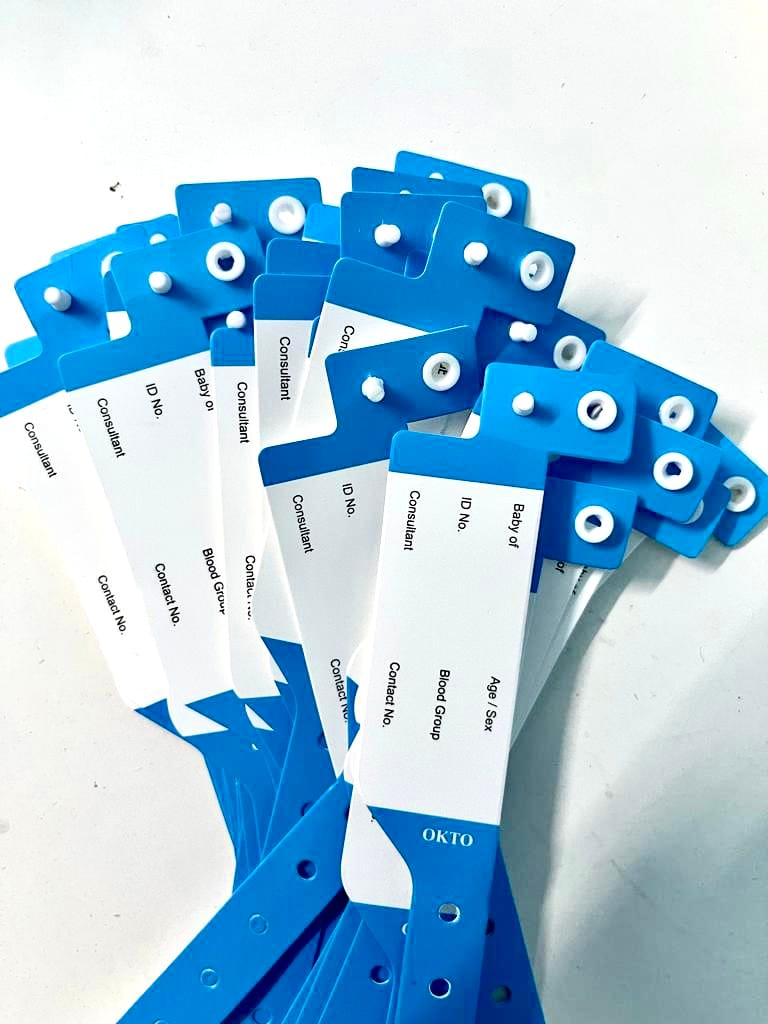Why Every Health Center Ought To Carry Out Patient Identification Band for Its Patients
Why Every Health Center Ought To Carry Out Patient Identification Band for Its Patients
Blog Article
Enhancing Patient Treatment With Reliable Identification Bands
The implementation of efficient recognition bands is an essential aspect in enhancing individual care within health care setups. These bands not only offer to minimize the risks related to client misidentification but likewise enhance interaction amongst medical personnel, thus promoting a safer atmosphere. Various kinds of recognition bands accommodate specific demands, from durable wristbands for grownups to specialized bands for infants and critical cases. As the landscape of client identification advances, one need to consider the ramifications of these systems on overall health care shipment and individual end results. What innovations await in this crucial area?
Importance of Patient Identification
Making sure exact person recognition is essential in healthcare setups, as it directly affects the safety and high quality of treatment offered. Misidentification can result in major errors, including carrying out the incorrect medicine, carrying out wrong treatments, or miscommunicating crucial client information. Such mistakes not just threaten patient security but can additionally lead to legal ramifications and lowered count on medical care systems.
Effective person identification is fundamental to developing a secure setting where clients obtain tailored and proper treatment. It facilitates the precise documents of case histories, allergies, and treatment plans, making certain that medical care suppliers have access to vital details in all times. Furthermore, robust recognition procedures help streamline interaction amongst medical team, boosting partnership and decreasing the danger of mistakes.

Sorts Of Recognition Bands
Identification bands play a crucial function in preserving precise patient records and boosting safety within health care environments. Various kinds of recognition bands are utilized to accommodate the specific requirements and needs of different person populaces.
)
An additional type is the ankle joint band, which is particularly valuable for babies and newborns, ensuring that recognition continues to be intact also during treatment procedures. Specialized bands, such as those for allergy signals or fall risk indicators, provide additional layers of safety by attracting instant focus to important patient problems.
Recently, electronic recognition bands have actually obtained appeal, incorporating barcodes or RFID innovation that can be checked to promptly get person information. These bands streamline workflows and decrease the threat of human mistake throughout person recognition procedures.
Advantages of Reliable Recognition
Effective identification of individuals via using recognition bands adds substantially to total patient safety and care top quality. By making certain that each individual is precisely determined, healthcare carriers can properly match medical treatments and treatments pop over here to the correct individual, reducing the risk of mistakes. This is particularly vital in environments with high patient turnover, where the potential for misidentification is greater.
Moreover, effective recognition bands boost communication amongst health care groups. Exact and clear client recognition promotes cooperation and makes sure that all employee know a person's specific demands and clinical history. This communication is vital for providing collaborated care, specifically in emergency circumstances where time is essential.

Eventually, effective recognition with the usage of identification bands not only safeguards patients but additionally promotes a society of security within healthcare centers (Patient Identification Band). By focusing on accurate recognition, medical care organizations can boost results and boost the total individual experience
Carrying Out Identification Solutions
While the significance of person recognition is well acknowledged, the execution of durable identification systems poses a facility difficulty for healthcare companies. Establishing reliable recognition systems requires an extensive approach, including innovation, personnel training, and process integration.
First, organizations must pick suitable identification modern technologies, such as barcode scanning, RFID, or biometric systems. Patient Identification Band. These innovations need to be examined based on price, usability, and compatibility with existing framework. A pilot program can help recognize potential issues before major application
Following, extensive training for team is important. All employees should comprehend the significance of precise person identification and excel in the use of the selected innovations. Routine training updates and evaluations can reinforce ideal practices and guarantee ongoing compliance.
In addition, medical care organizations should establish standard treatments for person identification across all departments, enhancing and decreasing disparities communication. Routine audits can assist recognize voids in adherence to these methods.

Ultimately, an effective implementation of recognition systems not just boosts individual safety however also promotes a society of accountability and diligence within medical care settings, making sure regular and trustworthy individual treatment.
Future Trends in Patient Recognition
Innovations in technology are established to transform patient identification techniques in healthcare setups. The integration of biometric identification approaches, such as fingerprinting and face recognition, is anticipated to enhance precision and safety. These technologies can substantially decrease the danger of misidentification, ensuring that clients obtain the appropriate treatments and medicines.
Furthermore, the implementation of blockchain innovation for client records is getting grip. This decentralized approach can offer a protected and tamper-proof method for taking care of client identities, consequently enhancing accessibility to important information across different health care service providers.
An additional fad is the enhancing Clicking Here use mobile health and wellness applications that leverage QR codes for person identification. These applications enable for real-time updates and very easy access to individual data, equipping medical care experts to make enlightened choices quickly.
In addition, expert system (AI) is positioned to play a crucial function in assessing patient anchor identification information, recognizing patterns, and predicting possible identification errors before they occur.
As these modern technologies advance, they assure not just to enhance person safety but likewise to boost the overall performance of health care shipment systems. Embracing these developments will be vital for future-proofing client treatment methods.
Final Thought
Finally, reliable recognition bands are necessary for boosting individual safety and care top quality within health care settings. By reducing the risks related to misidentification, these bands facilitate precise and timely information access, inevitably enhancing interaction among health care suppliers. The application of robust recognition systems not just cultivates a society of security but also settings health care organizations to adapt to future patterns in patient identification innovation, guaranteeing optimal end results for individuals in diverse professional atmospheres.
As the landscape of client recognition advances, one need to consider the effects of these systems on general healthcare shipment and individual results.Reliable patient recognition is fundamental to developing a secure environment where people obtain suitable and individualized care. Eventually, prioritizing efficient person recognition methods not just fosters a society of safety however additionally contributes to enhanced individual outcomes and overall complete satisfaction with medical care services.
Efficient recognition of clients with the usage of identification bands contributes dramatically to total patient safety and care high quality. The application of durable recognition systems not only fosters a culture of security but additionally placements medical care establishments to adjust to future fads in patient identification innovation, making sure optimum end results for people in varied clinical environments.
Report this page